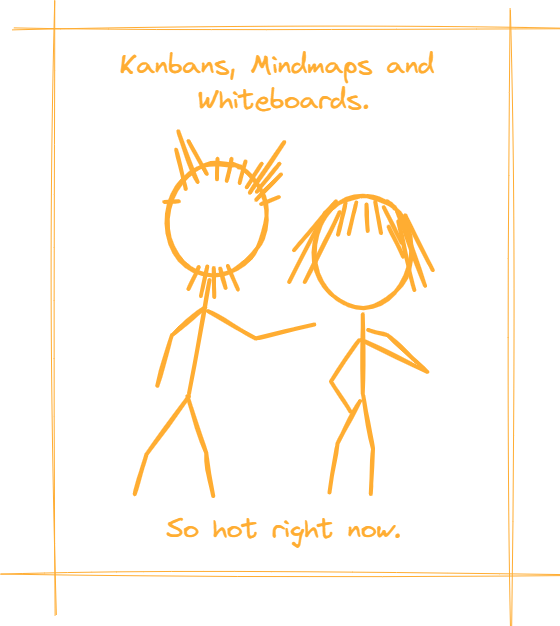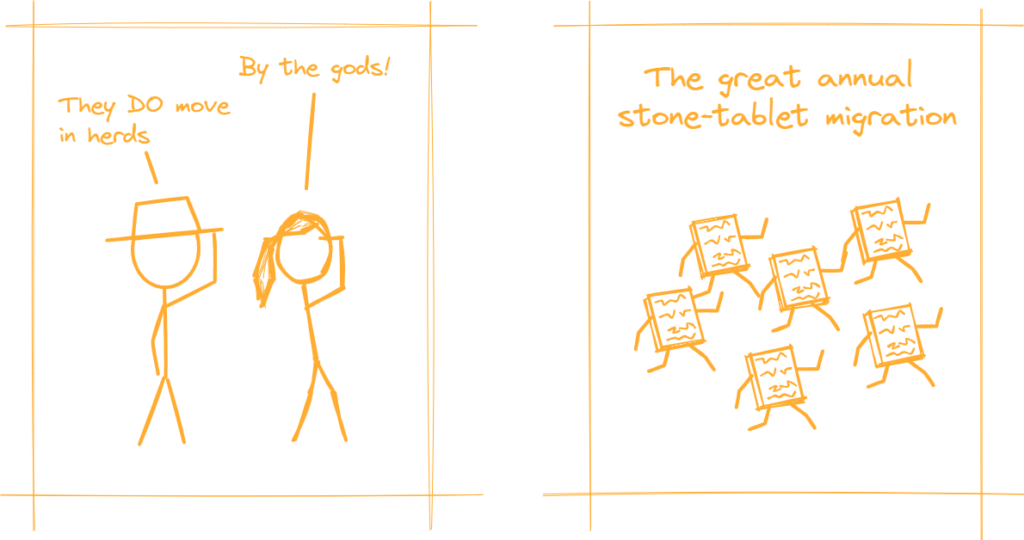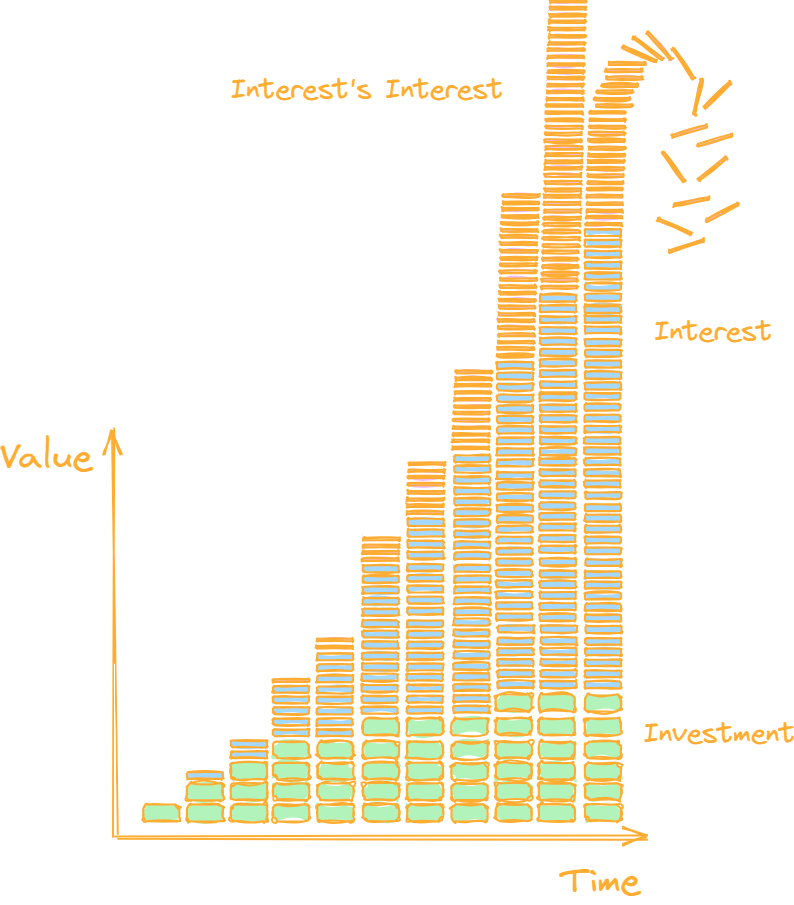Introduction
In past articles we talked a lot about the benefits and general effects of documentation as well as some guidelines, Repeating yourself more than RAID: Shadow-Legend commercials. But to apply documentation to its fullest capabilities it is best to understand why it is so beneficial that it advanced humanity technologically as far as we came.
Give us the goods, man!
The documentation-chain or “How does documentation do”
Stability
First off and most importantly:
Documentation is stable.
Like documentation itself, this attribute appears small, but when we consider the frailty of our thoughts it is ground-braking. We literally moved mountains thanks to it.

What is documented, remains, will wait until your return and stand ready. It doesn’t forget or is unsure about certain aspects, but freezes thoughts as you put them to paper (like Harry Potter’s Remembrall) [Schacter 2002, Rowling 2006].
Vingardium Liviosaaaa! Not VinGArdium Liviosa.
Unlike thoughts or ideas, effort must be expended to modify the information; depending how the documentation is done, a great deal of it, which means that documentation stays through time [Valladas 2001].
What you say stays in the now, what you write stays for eternity.
At least sometimes.
External memory
But ok, what does that help us. Some scribbles on a paper. Now what? Those scribbles on a paper have the remarkable property to carry information, that we can look up at a glance, which means that through documentation we can overcome the limits of our minds.
Documentation enables external memory
Are you afraid of forgetting something? Just note it down and there won’t be any further need to worry. It will be there when you need it.
There are also no rules about the extend of how much or how you do it. Who is gonna stop you if you want to remember events a little more detailed? You can also write, draw, record your voice, or film.
The computer scientist Gordon Bell even goes so far and carries a camera around his neck records to record every second of his life [Foer 2012].
Review
Of course putting stuff to paper is only half the equation. The other part is that we can look it up again. Gordon Bell is able to search through and analyze his recordings and every one of us has at least once looked something up we previously noted down.
You are literally reading something noted down for you right now.
This review of information of any kind is no small feat. Ever tried to explain a more complicated topic to someone? Documentation turns it into a breeze [Kim 2021]. We can also typically work much easier with written down information than with anything we hold in our mind. Or put another way: Ideas put to paper don’t have a tendency to wander.
Also called advanced wool-gathering.
There are countless documentation tools to make it easier too. Simple lists are just the start, but bullet points are soooo 1800s. Mindmaps, kanban-, whiteboards, quick scribbles and atomic notes are much hotter right now [Cunningham 2006].

Overview
The reorganization of information via these and other various forms of documentation brings another strong benefit with itself:
Documentation enhances your overview
Getting an overview over any topic was never easier than since the invention of common glyphs and letters. Pelican, hound on the ground, hound standing and angry cat to the rescue. And this property in turn helps us to overcome a weakness all humans suffer from.
Watch out, master of transitions coming through.
Extending working memory
Sadly, our cognitive capacities are limited. We can only remember and mentally work with a certain number of items that we are either presented with externally or from our long term memory. Although, for some lucky individuals the amount of items they can hold in this so called working memory is larger, it remains finite [Carpenter 1990, Cowan 2012]. Here again, Documentation springs to our help.
Documentation to the rescue.
Documentation extends our working memory.
It can extend our working memory externally through the right tools and eases the mental handling of topics and ideas, and oh, I don’t know, just improve our learning and problem solving and planning and comprehension and reasoning capabilities [Bruner 1996, Cowan 2014].
No biggy.
A challenge
At some point, when we read a book or an article, watch a movie or otherwise consume documentation, we might stumble over something that is written, said or drawn. Perhaps we don’t agree with it, or it uncovers a new perspective or way of thinking. In either case, it might push us out of our mental fortress of being.
The same holds true when we review our own creations. They confront us with our previous states of mind. After all anyone who looked at a diary-entry they wrote years ago, at least ones had the following thought: “How could I have ever been so…?” It can also be a mail, an old grocery list, a presentation, a piece of code or a drawing we’ve worked on. We review the documentation and might get challenged by it. But exactly there lies another of the strength of documentation. Its challenging nature.
Documentation is challenging
Every time we read, watch, or listen to something documented there is a chance that we are confronted by it. That’s how we grow and documentation extends the option for us to do so far beyond the exchanged words on the way to work, the coffee-break or any other encounter with acquaintances, friends or family.
And as bad as challenges might appear at first, they are a cornerstone for learning and general improvement.
Sun, Hu and Ding even went so far and tested the effect of challenges in workplace environment and found out that it improved both learning and creativity [Sun 2019].
Imagine a scholar throwing challenges at unsuspecting office workers.
Documentation improves learning and creativity.
Iteration
We are not the only ones who are affected from challenging information. Information itself might suffer too.
It isn’t me who is wrong. It’s all the others. – In best human nature.
It can again be small like the plan for the day, a number in a report or the schedule of a meeting – values get updated, formulas revised, poems corrected, audio- and video-logs reworked. And it can be big, like thought provoking ideas that spark whole new governments kinda big.
In either case,…
Documentation enables and promotes iterative work.
And iterative working has been linked to a number of positive effects:
- Progressive knowledge-generation [Wynn 2017, Hatchuel 2009]
- Improved and accelerated product development [Smith 1997].
- Improved precision of information [Wynn 2017, Le 2013, Sobek 1999].
- Improved concurrency [Wynn 2017].
Compounding
Of course, the stability of documentation affects knowledge-generation as well.
Stone tablets don’t have a tendency to run.

But when comes to documentation, knowledge isn’t just accumulating like the dust on your shelves, but…
Documentation is compounding
Yeah, you read that right. But for those, who don’t delve too deep into the realms of economics: What does compounding mean? Perhaps you have heard of compound interest. You deposit an amount of money at the bank. That amount generates interest for you. Next year, on top of the original amount, that interest also generates interest, and the next year after that and so on and so forth. It is a surefire way to generate money, become rich even. All it takes is patience and commitment.
Sweet!

The same is true for documentation. You write down a sentence and it stays (assuming your documentation-system holds up). Later you return to that sentence and add another. This is the accumulating part. But when working through documentation, the iterative part comes into full effect leading to what I call:
Good ideas are build on bad ones.
You start with something simple. It sparks some ideas, that develop, become something more and what started as a simple scribble scrabble turns into the next happy family, multi billion dollar company, or world dominating nation.
Looking at you “Declaration of Independence”.
The consequence of this compounding effect is that…
Documentation leads to natural growth of knowledge for the individual and, if shared, the organization.
Concurrency
But through reviewabilityIs that a word? and iteration, documentation also gives you an edge when we work on multiple topics simultaneously.
Our modern work environment often forces us to tackle more things than one. It is of course generally better to concentrate on a specific task at a time (multitasking has been proven to be suboptimal [Bannister 2009]), but we often have to wait for others to finish tasks or are otherwise blocked before we can continue with our own.
As a consequence, we work on one thing while waiting for another, with sometimes comedic piles building up.
At times I had more than 15 projects of varying size and complexity that I had to work on simultaneously. This meant organizing the project teams, keeping the stakeholders informed, assuring the clean recording of requirements and their smooth transition into the development process, resource management (because something has to be worked on after all and every developing hour is its length worth in gold), risk management (because project managers are sometimes magically supposed to see issues before they happen), budgeting, and a numerous deal of other things big and small.
Documentation was and still is my super power to keep an overview over all these projects and more tasks around it. The simple reason is, I can write everything that matters for a task down and then don’t have to carry it with me when working on another task. Likewise, since I already documented everything I need to work on that other task, I can just jump back in as if I never left.
In this way, documentation has saved me numerous times and allowed me to breeze through my jobs without any major hiccups.
Outro
This overviewHa, see what I did there? only scratches the surface of how documentation does, but I will leave it for now.
Let us know if you have any additional questions. We are looking forward to your comments. 🙂
Sources
| Key | Citation |
|---|---|
| Bannister 2009 | Bannister, F., & Remenyi, D. (2009). Multitasking: The uncertain impact of technology on knowledge workers and managers. Electronic Journal of Information Systems Evaluation, 12(1), pp1-12. |
| Bruner 1996 | Bruner, J. (1996). The culture of education. Cambridge, MA: Harvard University Press. |
| Carpenter 1990 | Carpenter, P. A., Just, M. A., & Shell, P. (1990). What one intelligence test measures: a theoretical account of the processing in the Raven Progressive Matrices Test. Psychological review, 97(3), 404. |
| Comedian70 2023 | Comedian70. 2023. https://www.reddit.com/r/spaceporn/comments/18xf1ji/the_farthest_oldest_galaxy_known_to_mankind/kg5tpv3/ |
| Cowan 2012 | Cowan, N. (2012). Working memory capacity. Psychology press. |
| Cowan 2014 | Cowan, N. (2014). Working memory underpins cognitive development, learning, and education. Educational psychology review, 26, 197-223. |
| Cunningham 2006 | Cunningham, G. E. (2006). Mindmapping: its effects on student achievement in high school biology. The University of Texas at Austin. |
| Foer 2012 | Foer, J. (2012). Moonwalking with Einstein: The art and science of remembering everything. Penguin. |
| Hatchuel 2009 | Hatchuel, A., & Weil, B. (2009). CK design theory: an advanced formulation. Research in engineering design, 19, 181-192. |
| Kim 2021 | Kim, S., Yang, J. W., Lim, J., Lee, S., Ihm, J., & Park, J. (2021). The impact of writing on academic performance for medical students. BMC Medical Education, 21(1), 1-8. |
| Le 2013 | Le, H. N. (2013). A transformation-based model integration framework to support iteration management in engineering design (Doctoral dissertation, University of Cambridge). |
| Rowling 2006 | Rowling, J. K. (2014). Harry potter and the goblet of fire. Bloomsbury Childrens Books. |
| Schacter 2002 | Schacter, D. L. (2002). The seven sins of memory: How the mind forgets and remembers. HMH. |
| Smith 1997 | Smith, R. P., & Eppinger, S. D. (1997). Identifying controlling features of engineering design iteration. Management science, 43(3), 276-293. |
| Sobek 1999 | Sobek II, D. K., Ward, A. C., & Liker, J. K. (1999). Toyota’s principles of set-based concurrent engineering. MIT Sloan Management Review. |
| Sun 2019 | Sun, Y., Hu, X., & Ding, Y. (2019). Learning or relaxing: how do challenge stressors stimulate employee creativity?. Sustainability, 11(6), 1779. |
| Valladas 2001 | Valladas, H., Clottes, J., Geneste, J. M., Garcia, M. A., Arnold, M., Cachier, H., & Tisnérat-Laborde, N. (2001). Evolution of prehistoric cave art. Nature, 413(6855), 479-479. |
| Wynn 2017 | Wynn, D. C., & Eckert, C. M. (2017). Perspectives on iteration in design and development. Research in Engineering Design, 28, 153-184. |


Leave a Reply